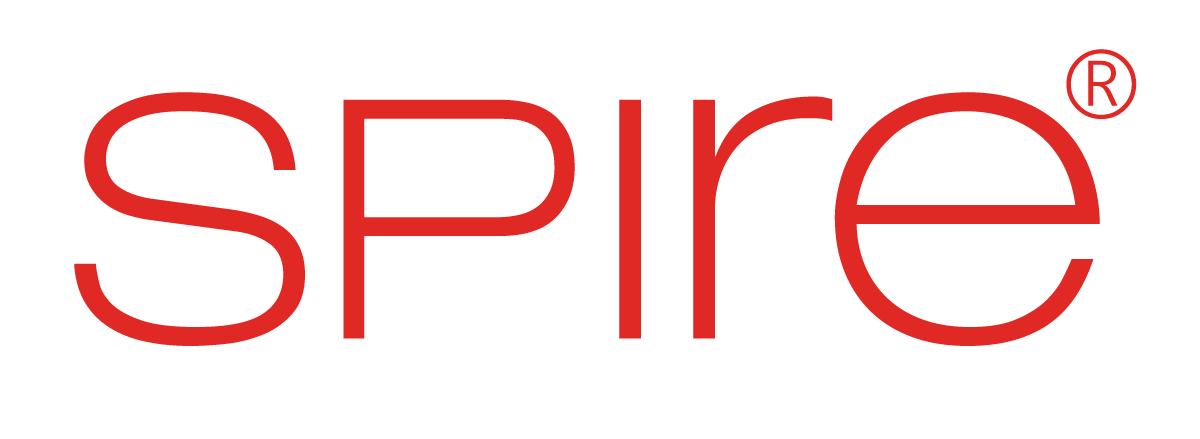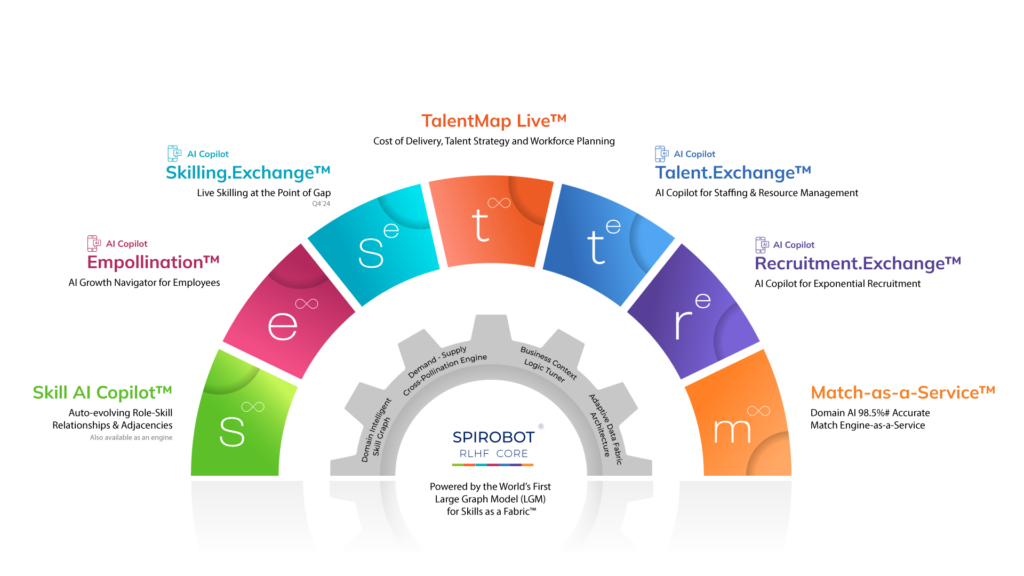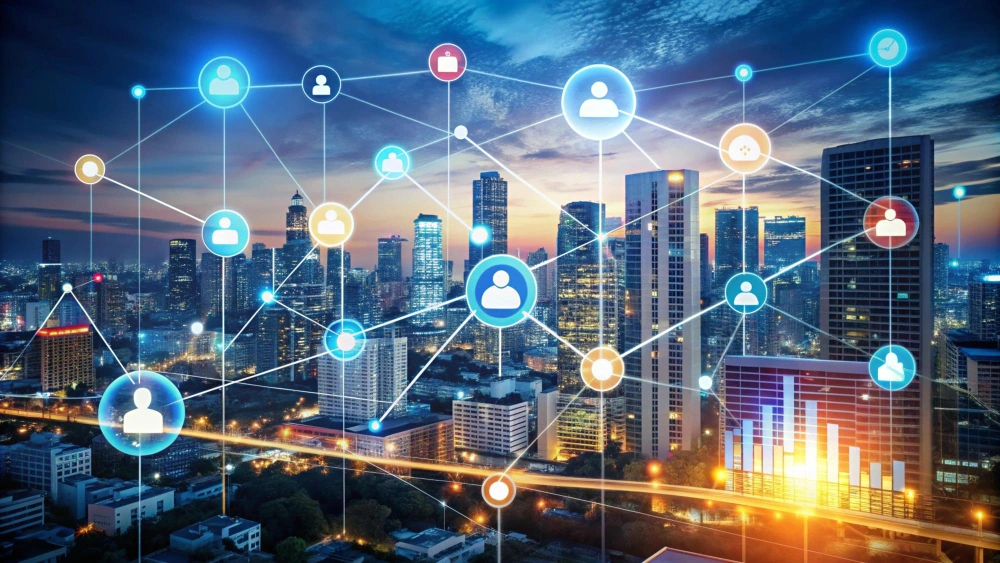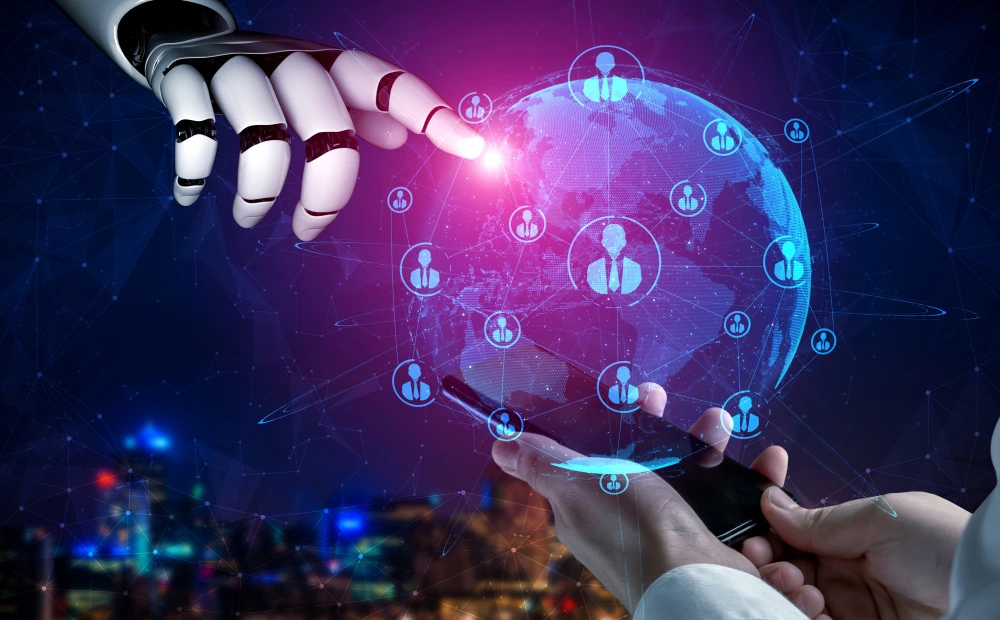HR workforce planning is undergoing a seismic shift as artificial intelligence (AI) revolutionizes how organizations forecast workforce needs, identify skill gaps, and optimize talent allocation. In a world where agility and data-driven decision-making define success, AI-powered analytics provide HR and talent leaders with unparalleled insights into workforce dynamics.
Organizations that effectively leverage AI in HR workforce planning can proactively shape their talent strategies, anticipate future demands, and build resilient workforces capable of adapting to market disruptions. This blog explores the transformative role of AI in HR workforce planning and highlights how Spire.AI is pioneering AI-driven solutions to stay ahead in the evolving world of work.
The Role of AI in HR Workforce Planning
HR workforce planning has traditionally been a complex, data-intensive process that relies on historical trends, industry benchmarks, and labor market insights. However, the increasing pace of change in the business world driven by digital transformation, shifting workforce demographics, and evolving skill requirements, demands a more agile, data-driven approach.
AI has emerged as a game-changer in HR workforce planning, enabling organizations to predict talent needs, optimize resource allocation, and make informed decisions that align with long-term business goals.
Predictive Workforce Analytics
AI enables HR teams to analyze vast amounts of data and generate accurate forecasts regarding future workforce requirements. By assessing historical hiring trends, employee performance data, and industry insights, AI can identify patterns that signal future talent shortages, turnover risks, or evolving skill demands.
For example, AI-powered workforce analytics can help HR leaders determine whether an organization’s current workforce is equipped to handle emerging business challenges. If gaps exist, AI can suggest whether hiring, upskilling, or internal talent mobility would be the best solution.
Skill Gap Identification and Talent Development
As industries evolve, so do the skills required to stay competitive. AI helps HR professionals identify skill gaps within their organizations by analyzing job descriptions, employee performance data, and labor market trends. AI-powered platforms can assess workforce capabilities in real time, highlighting areas where additional training or recruitment efforts are necessary.
For example, AI can map current employee skills against industry demands to pinpoint where workforce development efforts should be focused. AI-powered learning management systems (LMS) can then recommend personalized upskilling and reskilling programs, ensuring employees remain competitive and organizations maintain a future-ready workforce.
According to the World Economic Forum, by 2025, nearly 50% of all employees will require reskilling due to automation and digital transformation. AI-driven workforce planning helps businesses proactively address these challenges, ensuring that employees receive timely training to meet evolving job requirements.
Optimized Talent Acquisition and Hiring Strategies
Recruitment has become increasingly competitive, with organizations struggling to attract and retain top talent. AI enhances HR workforce planning by streamlining the hiring process, ensuring businesses hire the right people at the right time.
AI-driven applicant tracking systems (ATS) analyze resumes, match candidates with job openings based on skill compatibility, and predict the likelihood of a candidate’s success in a given role. By leveraging AI for talent acquisition, businesses can reduce hiring biases, minimize turnover rates, and ensure that workforce planning efforts align with long-term organizational goals.
Dynamic Workforce Allocation and Internal Mobility
AI-driven HR workforce planning optimizes workforce allocation by ensuring the right people are assigned to the right projects at the right time. AI analyzes workload distribution, employee skills, and project requirements to recommend optimal workforce deployment strategies.
Additionally, it facilitates internal talent mobility by identifying high-potential employees who can transition into new roles within the organization. AI-powered internal job marketplaces match employees with open positions based on their skills, career aspirations, and organizational needs, fostering talent retention and employee satisfaction.
Real-Time Decision-Making and Workforce Agility
Traditional workforce planning is often static, relying on annual or quarterly assessments. However, in today’s rapidly changing business landscape, organizations need the ability to make real-time adjustments to workforce strategies. AI provides real-time insights into workforce dynamics, enabling HR leaders to respond quickly to talent shortages, market disruptions, or business growth opportunities.
A report by PwC states that companies using AI for real-time workforce decision-making are more likely to achieve business agility and sustained growth than those relying solely on traditional HR planning methods.
As businesses continue to navigate an uncertain future, AI-driven HR workforce planning will be critical in building agile, resilient workforces that can adapt to changing industry demands. Organizations that embrace AI as a core component of their HR strategy will not only future-proof their workforce but also gain a competitive advantage in attracting, retaining, and developing top talent.
How AI Supports Strategic HR Planning
Strategic HR planning is the backbone of a successful workforce strategy, ensuring that businesses have the right talent, skills, and capabilities to achieve their long-term goals. However, traditional HR planning often relies on historical data, manual processes, and static assumptions that may not align with the rapidly changing business landscape.
AI has emerged as a transformative force in HR planning, enabling organizations to take a proactive, data-driven, and strategic approach to talent management. It supports strategic HR planning in the following ways.
- Anticipating Future Needs: AI enhances workforce demand forecasting by analyzing vast amounts of internal and external data to predict talent needs with high accuracy. Unlike traditional forecasting methods, which rely on past trends, AI-powered predictive analytics consider real-time factors such as economic conditions, industry disruptions, technological advancements, and labor market trends.
- AI-Driven Skills Mapping and Gap Analysis: With rapid technological advancements, skills requirements are constantly evolving. AI plays a crucial role in strategic HR planning by mapping existing workforce skills against future business needs, identifying gaps, and recommending upskilling or reskilling initiatives.
AI-powered skills taxonomies analyze job descriptions, performance data, and market trends to provide a comprehensive overview of workforce capabilities.
Example: An AI-driven workforce planning tool can identify that data analytics skills will be in high demand within the next three years due to increasing reliance on digital transformation. By recognizing this early, HR leaders can recommend learning programs to develop internal talent instead of relying on costly external hiring. - Building Leadership Pipelines: Strategic HR planning involves preparing for leadership transitions by identifying and nurturing high-potential employees. AI-driven talent analytics improve succession planning by assessing employee performance, leadership potential, and career progression patterns.
AI can evaluate qualitative and quantitative data such as performance reviews, engagement scores, and peer feedback to identify employees best suited for leadership roles. AI also provides data-driven insights into employee aspirations and retention risks, helping organizations take proactive steps to retain and develop future leaders. - AI-Optimized Workforce Allocation and Resource Management: AI supports strategic HR planning by optimizing workforce allocation, ensuring that organizations deploy talent effectively across projects, departments, and business units. AI-powered workforce analytics assess employee skill sets, project demands, and workload distribution to recommend optimal workforce deployment strategies.
For instance, AI can identify employees who are underutilized or whose skills match new opportunities, enabling HR teams to reassign them to high-priority projects. AI also detects workforce imbalances, such as teams experiencing burnout or understaffing, allowing HR to take corrective actions in real time. - Real-Time Workforce Insights for Agile Decision-Making: Traditional HR planning often involves annual or quarterly reviews, making it difficult to adapt to sudden changes in the business environment. AI enables real-time workforce insights, allowing HR teams to make agile, data-driven decisions.
AI-powered dashboards provide live updates on key workforce metrics such as turnover rates, employee engagement levels, and hiring trends empowering HR leaders to take immediate action.
How Spire.AI is Transforming HR Workforce Planning
As organizations navigate the complexities of workforce planning in an era of rapid technological advancements, talent shortages, and shifting business needs, the role of AI in HR workforce planning has never been more critical. Spire.AI is at the forefront of this transformation, pioneering AI-driven workforce planning solutions that empower HR leaders with predictive insights, data-driven decision-making, and workforce agility.
By leveraging advanced technologies like Domain-Intelligent AI, Large Graph Model (LGM) for Skills, and predictive workforce analytics, Spire.AI is redefining how businesses forecast talent needs, identify skill gaps, optimize workforce allocation, and future-proof their organizations. Here’s how Spire.AI is driving the next evolution in HR workforce planning.
1. Anticipating Talent Demands
One of the biggest challenges in HR workforce planning is predicting future talent needs accurately. Traditional planning methods rely on historical data, which often fails to account for rapid market changes and emerging job roles.
Spire.AI’s predictive analytics model integrates:
Spire.AI’s AI-powered workforce analytics help analyze massive datasets, identify patterns, and forecast future workforce requirements with high precision.
- Industry trends: Domain-AI continuously scans labor market data, industry shifts, and economic changes to predict workforce supply and demand.
- Internal workforce trends: The framework monitors employee performance, turnover rates, and hiring trends to assess talent pipeline risks.
- Technology adoption impact: Domain-AI evaluates how automation, AI adoption, and digital transformation will impact workforce requirements in the next few years.
Example: If Spire.AI’s model detects that a company’s finance department will experience a skill gap in data analytics within the next two years, HR leaders can proactively upskill employees, hire specialized talent, or adjust recruitment strategies to meet business needs before the gap widens.
This proactive, data-driven approach ensures that companies stay ahead of workforce trends, minimizing talent shortages and maximizing operational efficiency.
2. Large Graph Model (LGM) for Skills: Mapping Workforce Capabilities to Future Needs
Understanding workforce skills at scale is a complex challenge. Spire.AI’s Large Graph Model (LGM) for Skills is an AI-powered skills intelligence platform that maps an organization’s current workforce capabilities to future job roles and business objectives.
How It Works:
- The model analyzes employees’ existing skills, past job experiences, certifications, and learning patterns.
- It matches employees to future skill requirements based on industry trends and company goals.
- It recommends personalized upskilling or reskilling programs to bridge skill gaps before they impact business performance.
Strategic Benefits:
- Optimized workforce development: The platform helps recommend relevant training programs to ensure employees acquire future critical skills.
- Cost reduction: Instead of hiring externally, companies can upskill or reskill existing employees, saving on recruitment costs.
- Better career mobility: AI suggests internal career growth paths, enhancing employee retention and reducing attrition.
By leveraging Spire.AI’s LGM for Skills, companies create a future-ready workforce, where employees continuously evolve alongside business needs.
3. Domain-Intelligent AI: Industry-Specific Talent Strategies
Not all workforce planning challenges are the same, different industries have unique talent needs. Spire.AI’s Domain-Intelligent AI is designed to provide industry-specific insights and workforce planning strategies tailored to finance, healthcare, technology, manufacturing, retail, and more.
Key Capabilities:
- Sector-Specific Workforce Trends: AI identifies job role evolution, required skill sets, and hiring trends within specific industries.
- Custom Hiring Recommendations: The platform provides tailored recruitment strategies based on industry talent shortages and workforce dynamics.
- Industry-Specific Workforce Risk Analysis: AI highlights potential talent risks such as automation impact or skills obsolescence specific to each sector.
Spire.AI’s Domain-Intelligent AI ensures that workforce strategies are not just data-driven, but also aligned with industry-specific realities, making HR planning more precise, relevant, and impactful.
4. Real-Time Workforce Allocation: Dynamic Talent Management
The modern workplace is highly fluid, projects shift, business priorities change, and teams need real-time workforce adjustments to remain productive. Spire.AI’s AI-driven real-time workforce allocation tool optimizes how talent is assigned across projects, departments, and geographies.
How It Works:
- Domain-Intelligent AI analyzes workload distribution, employee availability, and skill compatibility.
- It suggests optimal workforce deployment to maximize productivity.
With real-time workforce intelligence, organizations avoid project delays, optimize employee workloads, and drive operational efficiency.
The Future of Workforce Planning with Spire.AI
As businesses embrace digital transformation, AI-driven workforce planning has become a strategic imperative for staying competitive in a rapidly evolving job market. Spire.AI’s intelligent workforce solutions empower HR leaders to:
- Predict workforce trends and prepare for talent shortages.
- Develop a future-ready workforce through skills intelligence and other futurecasting initiatives.
- Align workforce strategies with industry-specific realities.
- Optimize real-time talent deployment and workforce agility.
By combining Domain-Intelligent AI, LGM for Skills, and predictive analytics, Spire.AI is redefining workforce planning, helping businesses build resilient, agile, and future-proof workforces.
Organizations that leverage AI-powered workforce planning today will outperform competitors, retain top talent, and drive long-term business success in the future of work. With Spire.AI, the future of workforce planning is here.
Conclusion: AI is the Future of HR Workforce Planning
AI is transforming HR workforce planning by enabling predictive workforce forecasting, skill gap analysis, and dynamic talent allocation. Organizations that embrace AI-driven workforce strategies gain a competitive edge by making informed decisions, enhancing workforce agility, and fostering long-term talent resilience.
Spire.AI is leading the charge in revolutionizing workforce planning, providing HR leaders with powerful AI tools to navigate workforce complexities with confidence. By leveraging AI-powered insights, organizations can build agile, future-ready workforces capable of thriving in the ever-changing world of work.
The future belongs to organizations that harness AI to drive strategic workforce planning, ensuring they remain resilient, innovative, and ahead of the competition.






